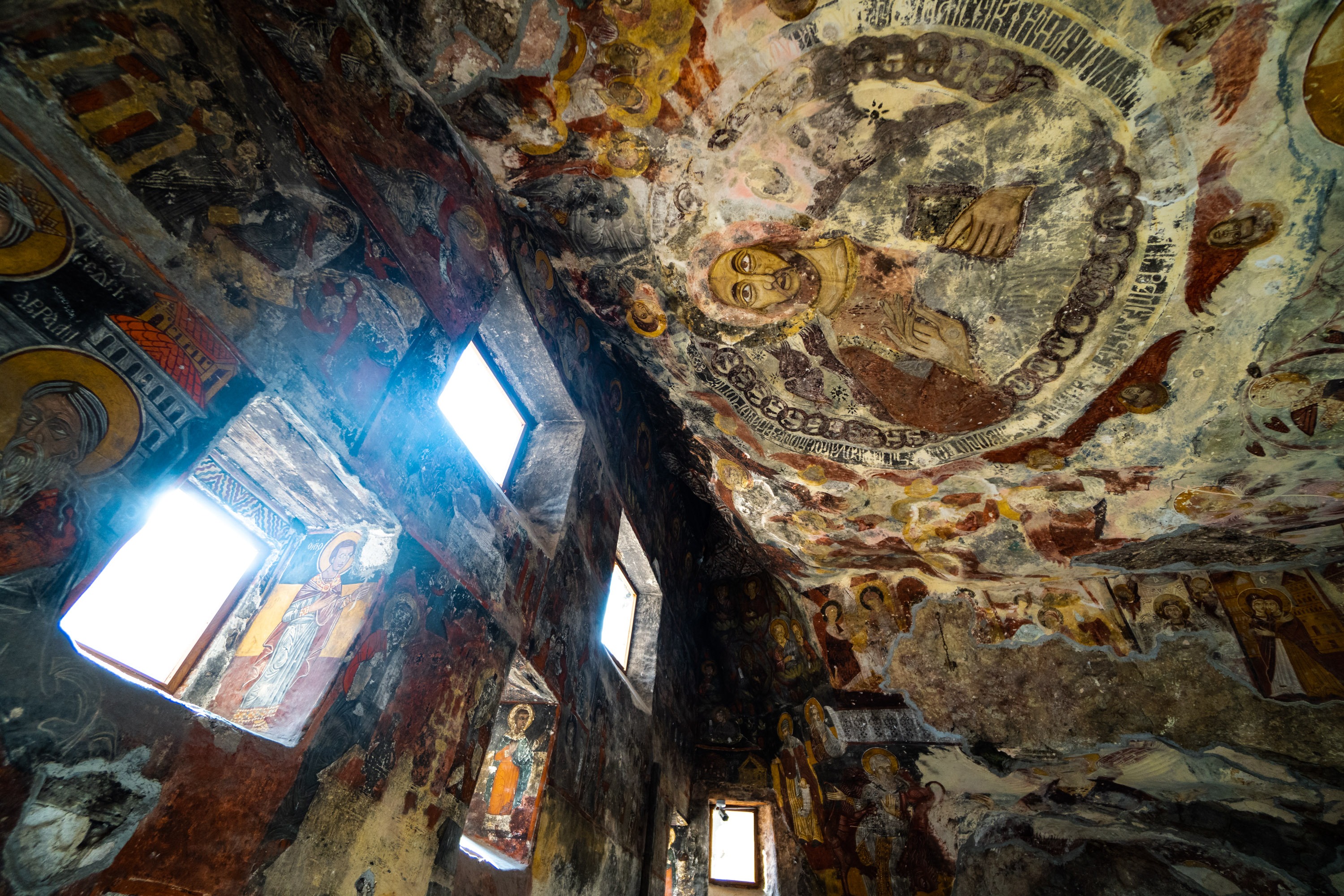Sümela Monastery: Defying Gravity On A Steep Cliff At The Edge Of Heaven
Sumela Monastery is a Greek Orthodox monastery located in the Pontic Mountains of northern Turkey.
Perched on a steep cliff at about 1,200 meters (3,900 feet) above sea level, it overlooks the beautiful Altındere valley.
It is one of Trabzon Province’s top tourist attractions within Altındere National Park.
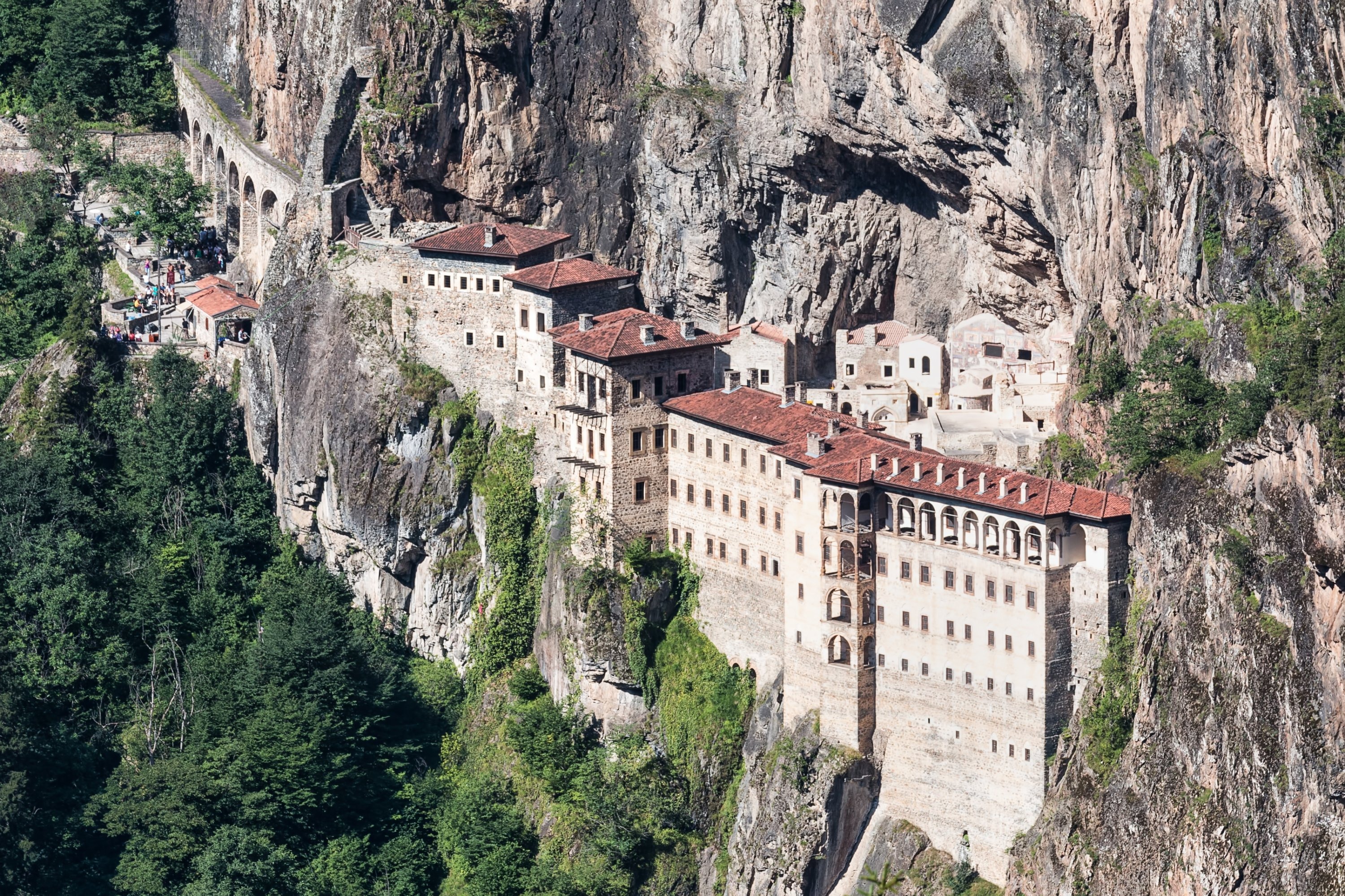
Etymology
The name “Sumela” comes from the Greek ‘Sou Melá,’ meaning “of black (mountain),” possibly referring to the Karadağ (Black Mountain) where it is located.
Some also suggest the name alludes to the black Madonnas common in the region.
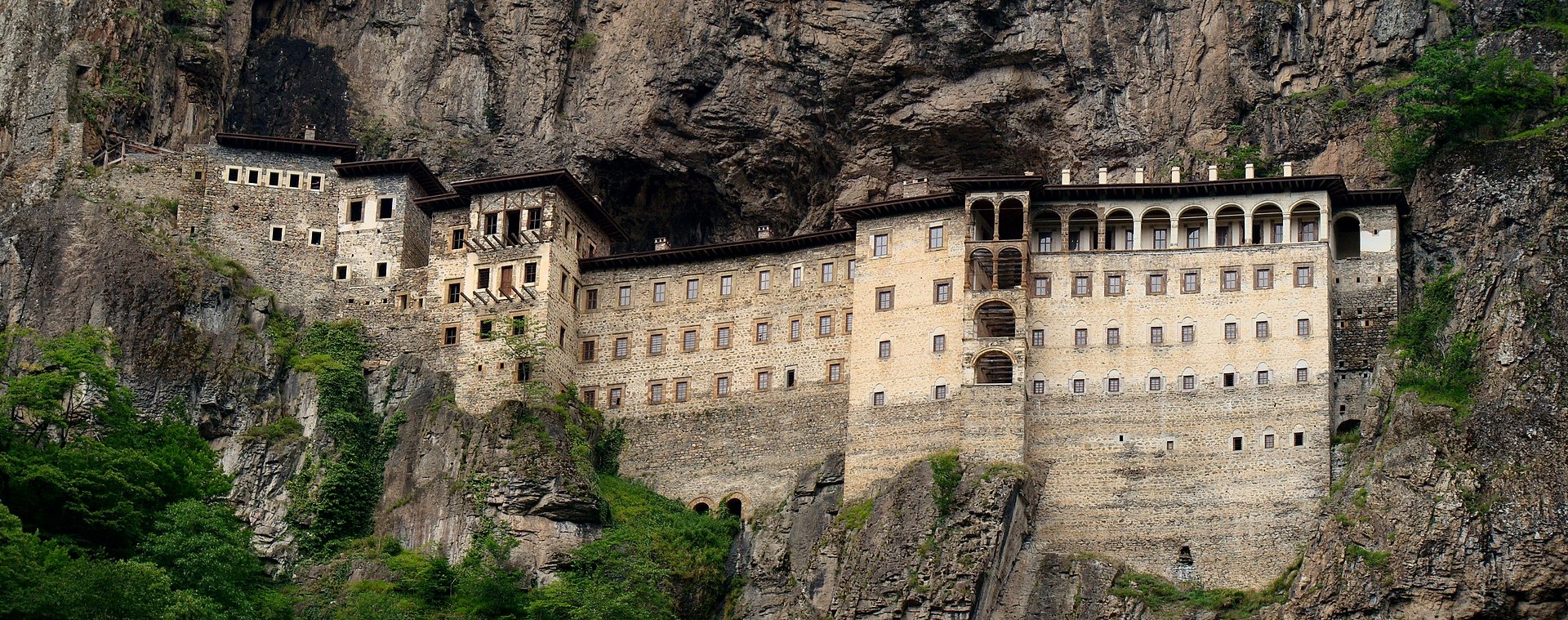
The monastery is dedicated to the Virgin Mary
Sumela Monastery was founded around AD 386 during the reign of Emperor Theodosius I (375–395 AD).
According to legend, two Athenian monks, Barnabas and Sophronios, discovered an icon of the Theotokos (Virgin Mary) in a cave at the site.
The icon, known as the Panagia Gorgoepekoos, is believed to be painted by the Apostle Luke.
It became central to the monastery’s spiritual significance.
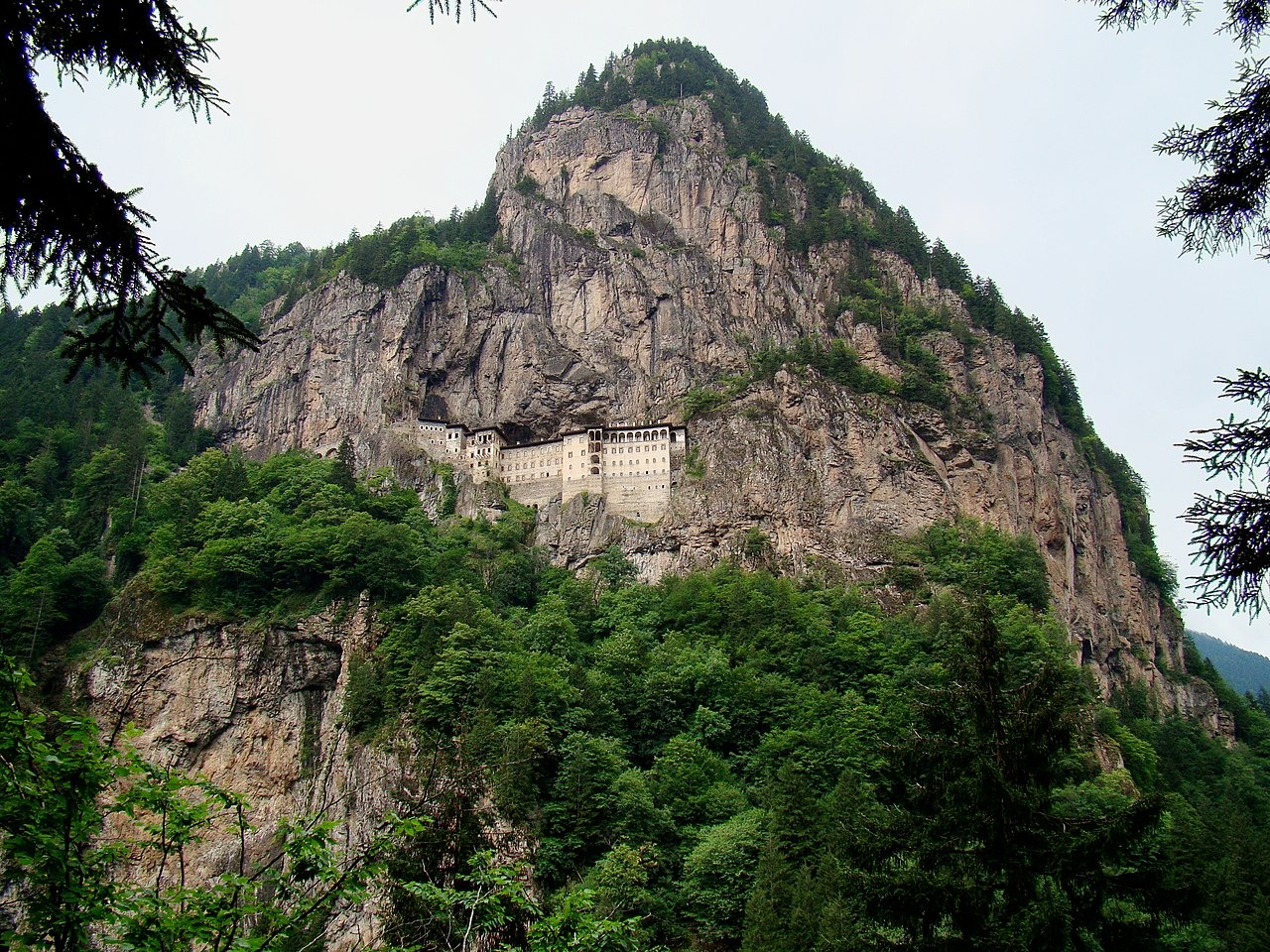
The monastery has been restored multiple times throughout history
In the 6th century, it was restored and expanded by the Byzantine general Belisarius under Emperor Justinian.
The current layout dates mostly from the 13th century when the Empire of Trebizond invested heavily in the site.
Emperor Alexios III (1349–1390) especially favored the monastery, which received many gifts and privileges.
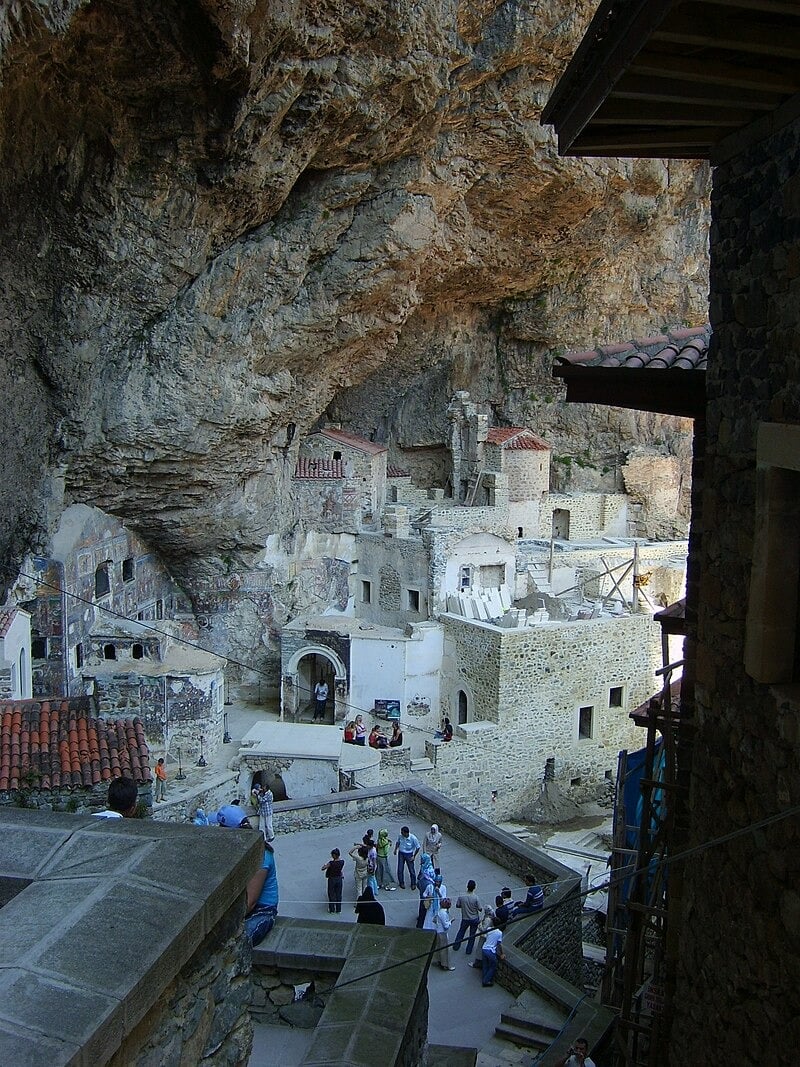
Ottoman Era and Beyond
After the Ottoman conquest in 1461, Sumela Monastery continued to thrive under the sultan’s protection, enjoying various rights and privileges.
It remained a significant religious and cultural center until the early 20th century.
Following the collapse of the Ottoman Empire and the establishment of the Turkish Republic in 1923, the monastery was abandoned due to the population exchange between Greece and Turkey.
Many treasures were transferred to a new Panagia Sumela Monastery in Macedonia, Greece.
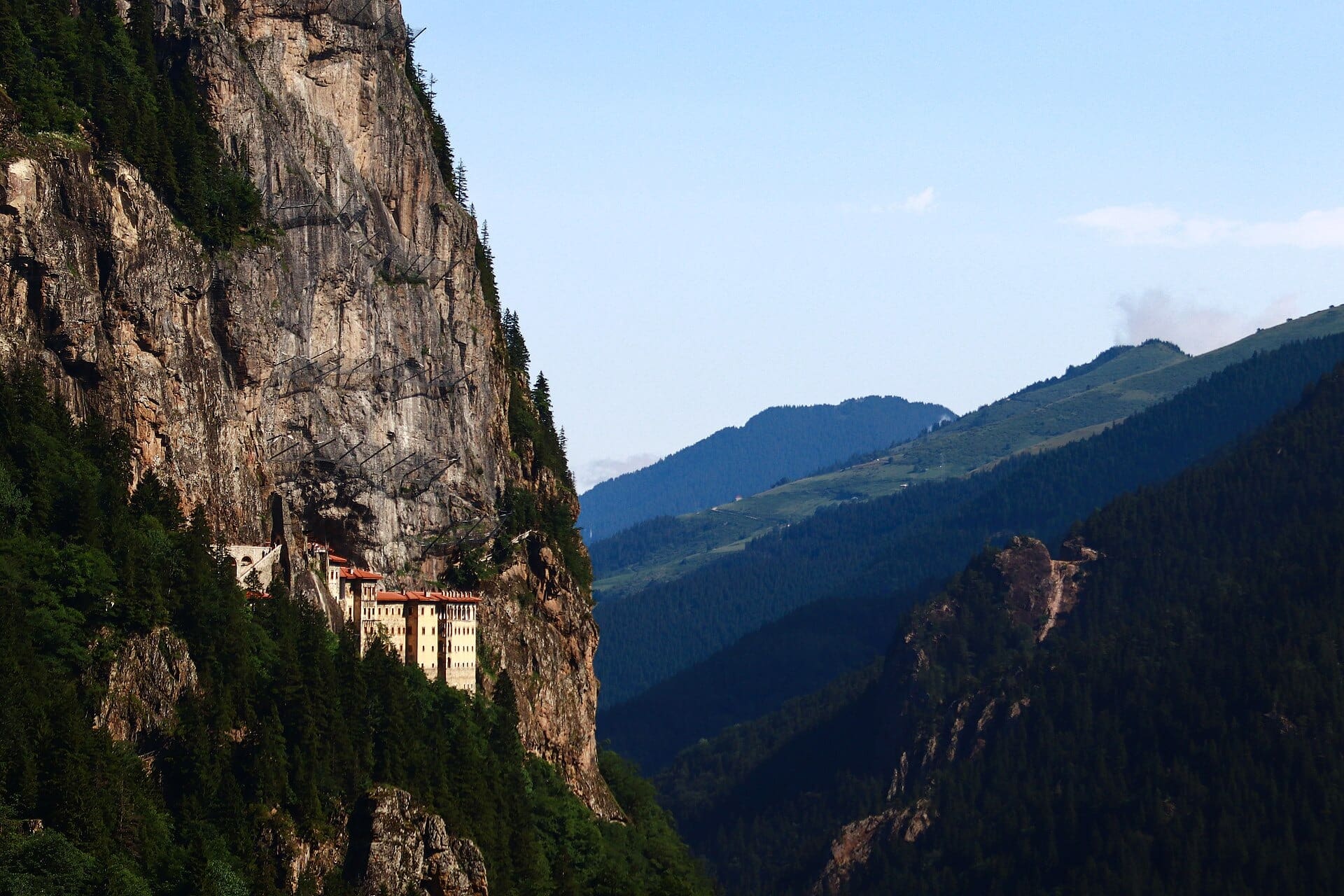
Modern Restoration of Sümela Monastery
Despite suffering damage from fires and looting in the 20th century, Sumela Monastery has been carefully restored with funding from the Turkish government.
The monastery reopened to the public on May 25, 2019, after being closed for restoration due to rock falls.
Today, it primarily serves as a tourist attraction, drawing visitors from around the world.
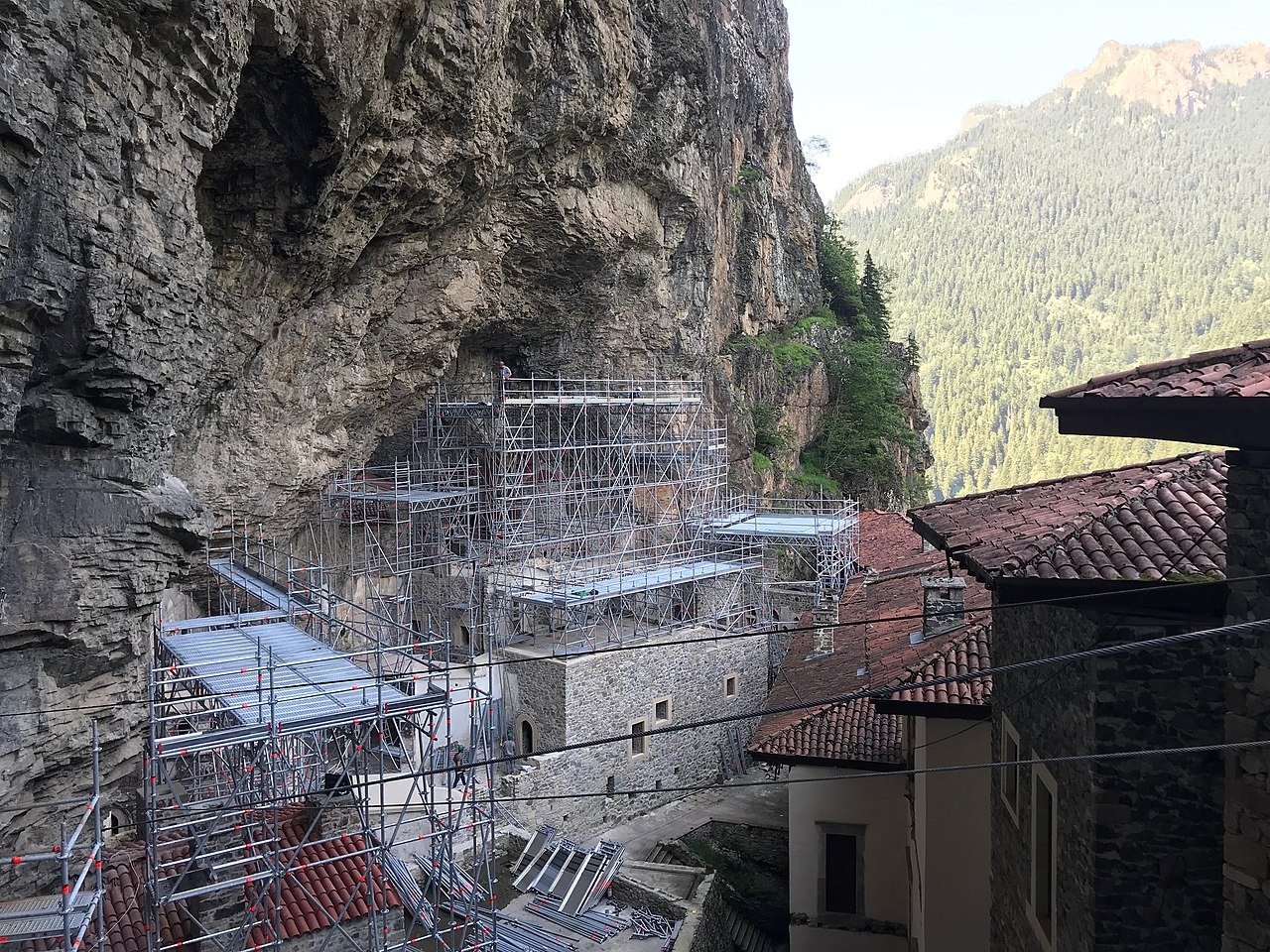
In recent years, the monastery has also experienced a revival as a pilgrimage site, with Orthodox divine liturgies being permitted on special occasions.
On August 15, the day of the Dormition of the Theotokos, a divine liturgy is held, requiring a special pass from the Ecumenical Patriarchate of Constantinople.

Architecture
The Sumela Monastery complex includes the Rock Church, several chapels, kitchens, student rooms, a guesthouse, a library, and a sacred spring.
Visitors enter the monastery through a narrow stairway leading up from the aqueduct.
The large aqueduct at the entrance once supplied water to the monastery and remains a significant feature.

Inner Courtyard
Upon entering the monastery, visitors find themselves in an inner courtyard surrounded by various buildings.
The courtyard is a central hub, from which several important structures can be accessed.
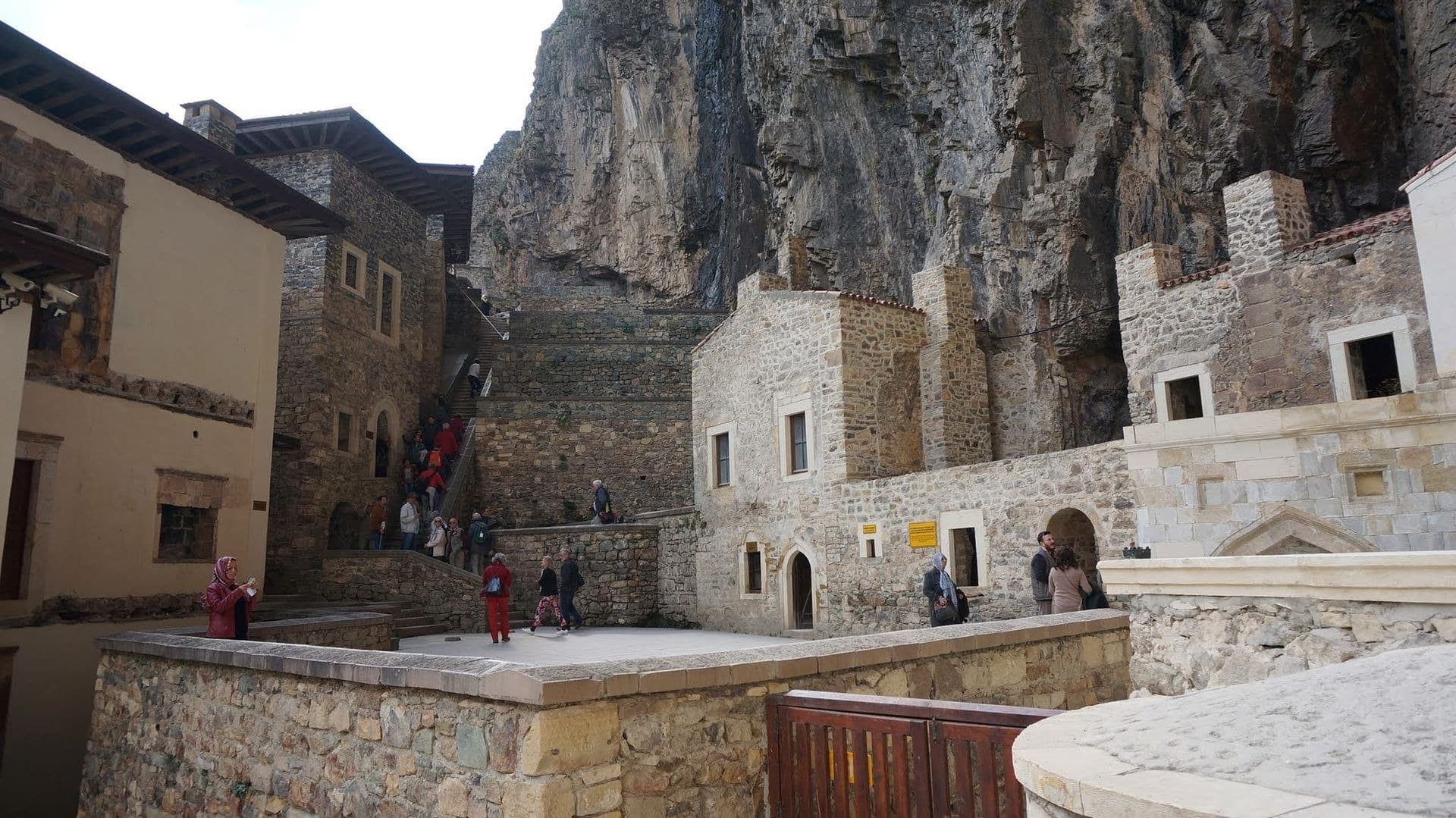
Library, Monks’ Cells and Living Quarters
The library housed important religious texts and manuscripts.
The monks’ living quarters are located in a large building with a balcony that overlooks the valley.
This building, constructed in 1840, contains cells for the monks, as well as guest accommodations.
The living quarters are notable for their simple yet functional design, emphasizing the monastic lifestyle.
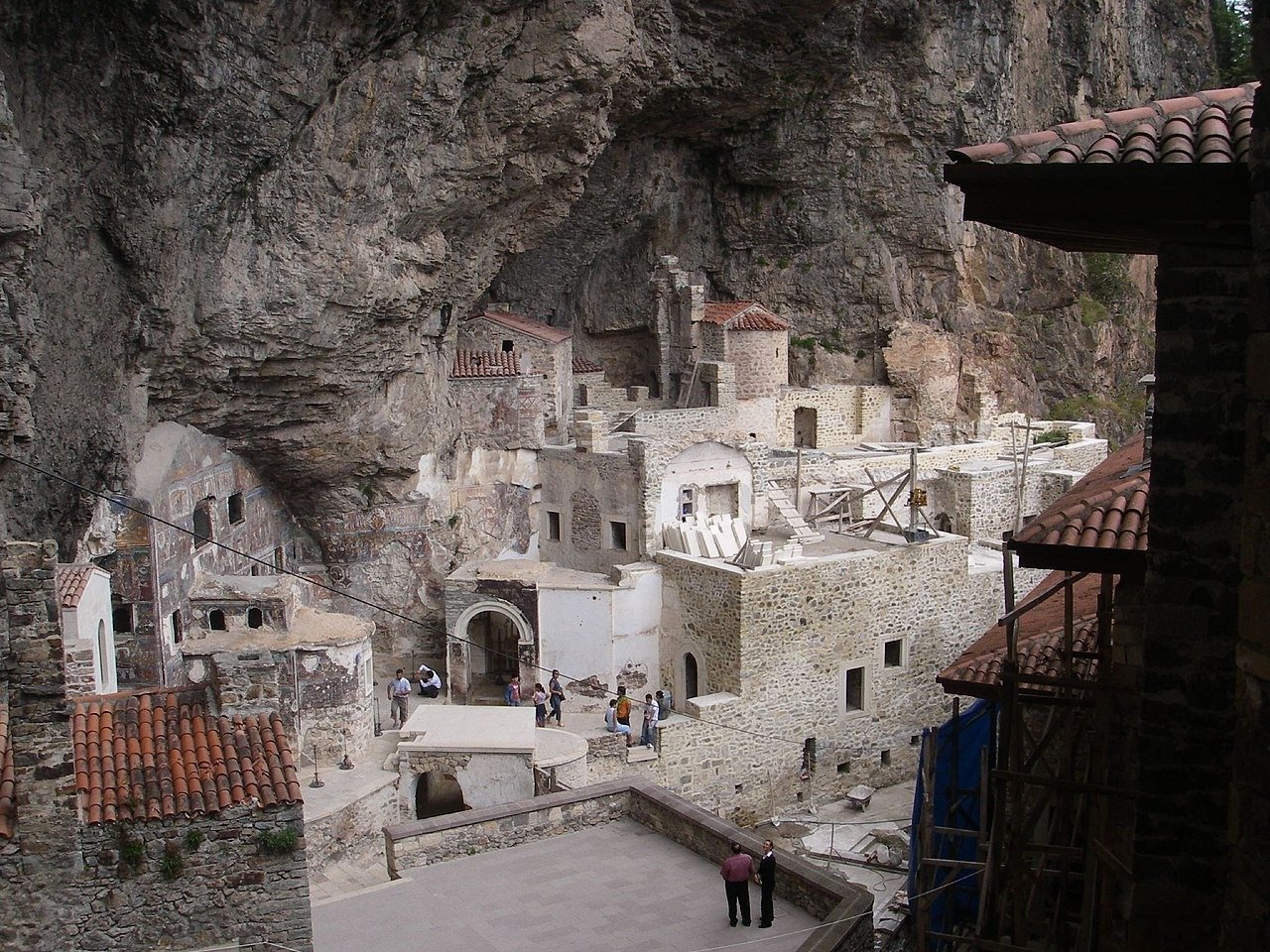
The Rock Church
The Rock Church, the oldest part of the complex, is carved directly into the cave.
The entrance is through a narrow stairway from the main courtyard.
Its walls, both interior and exterior are adorned with frescoes depicting biblical scenes from the lives of Jesus and the Virgin Mary.
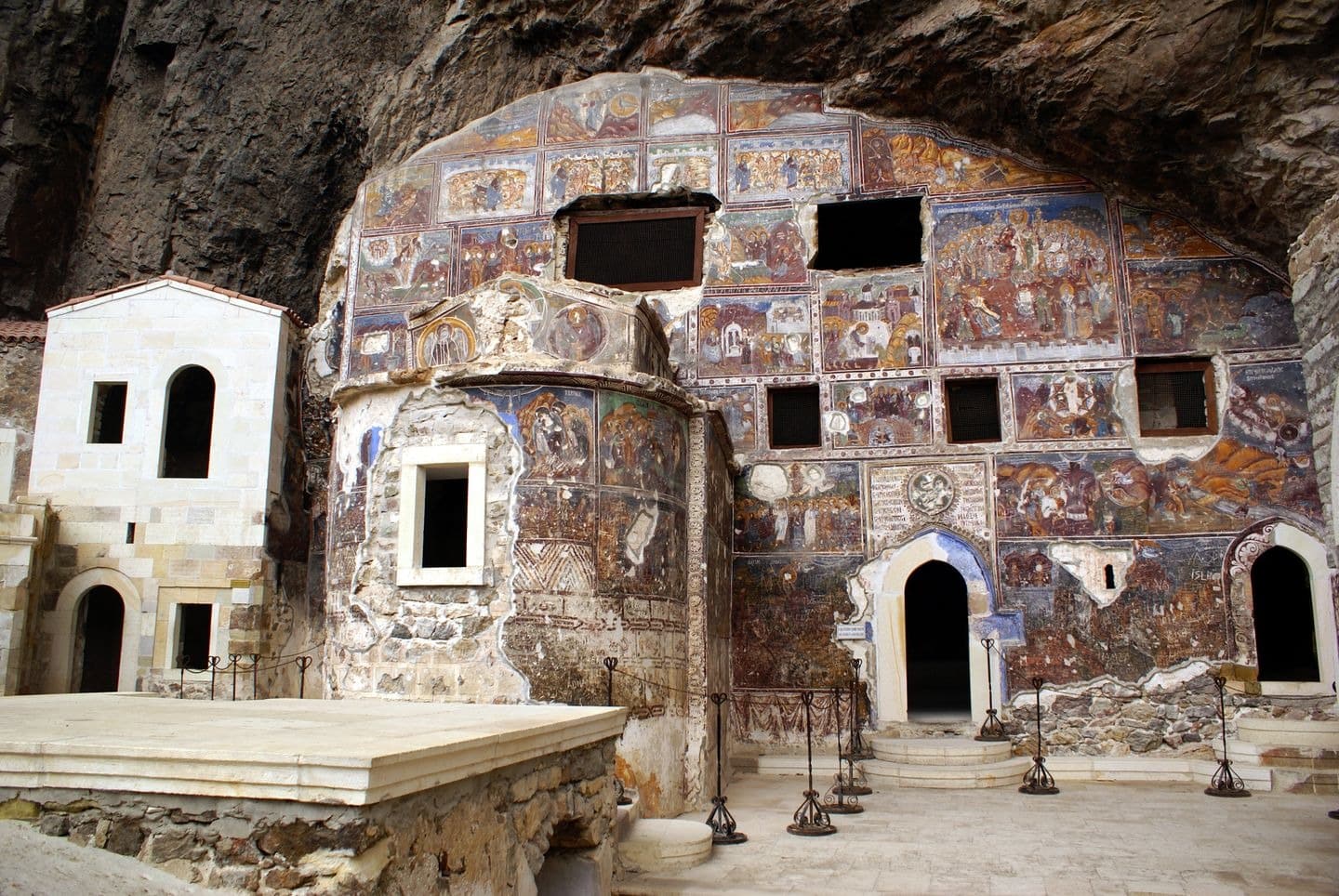
Key scenes include the Nativity of Jesus, his miracles, the Passion, and moments from Mary’s life.
Many frescoes have suffered damage over time due to vandalism and natural wear.
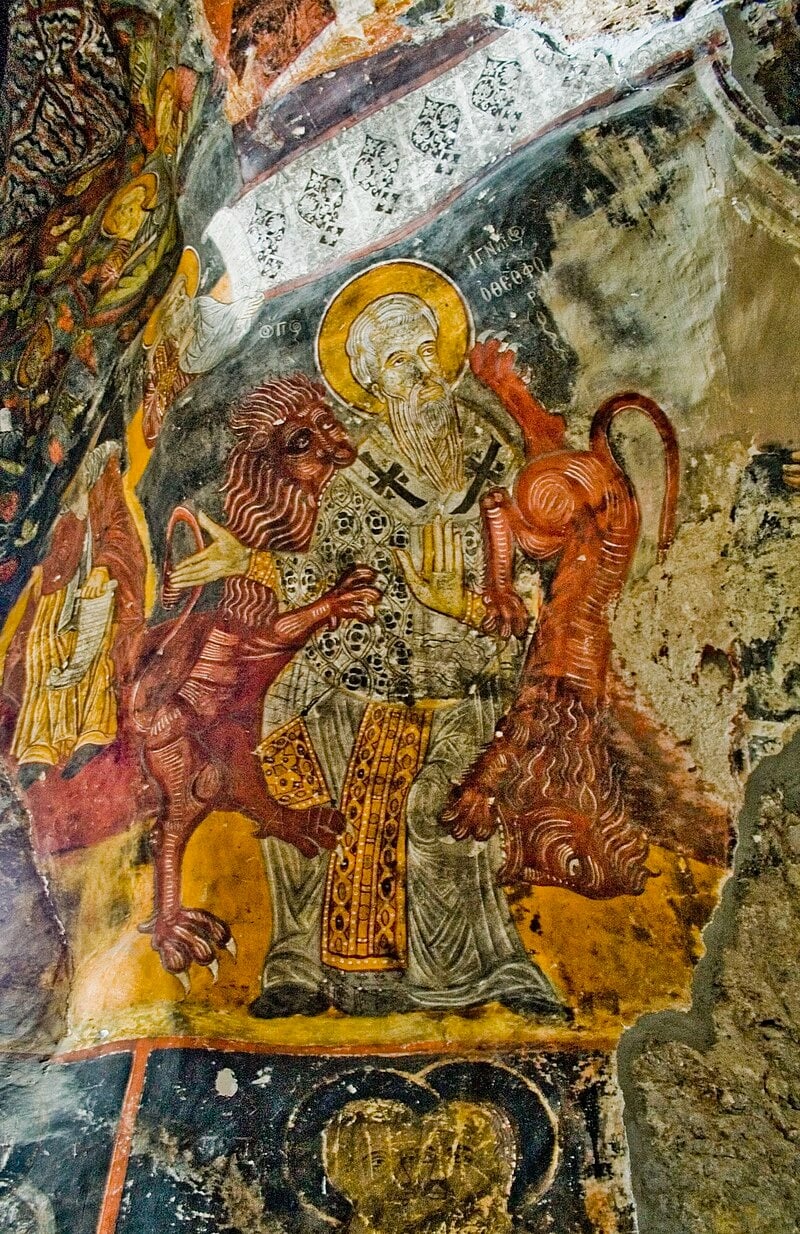
During restoration work from 2015 to 2017, a secret tunnel was found, leading to a hidden temple or chapel.

Unseen frescoes depicting heaven, hell, life, and death were also discovered, adding to the church’s historical intrigue.
